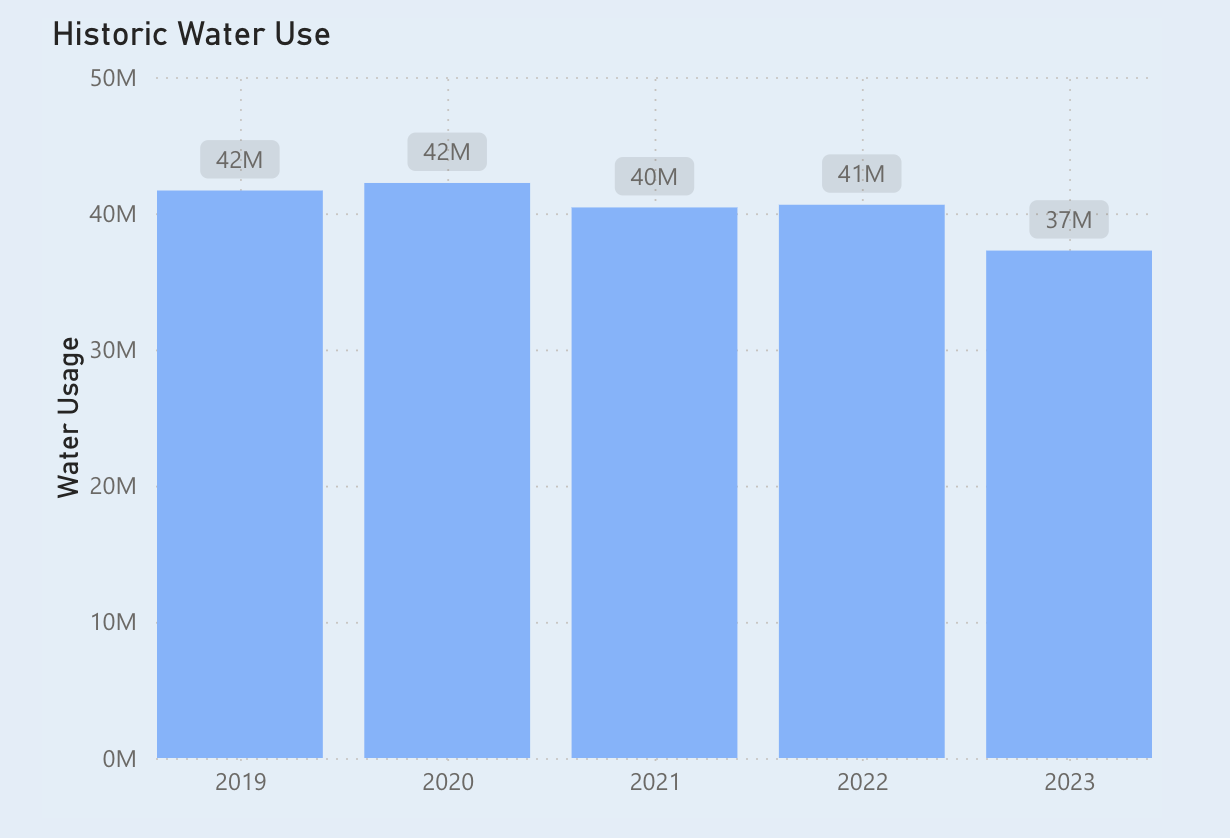Angela Zhang ’28
Staff Writer
Green, the representative color of Scripps College, is inextricably associated with the school’s vast carpets of green and the devoted sustainability effort. As Scripps students, we are incredibly fortunate to enjoy such a verdant and vibrant campus, where one can witness people slacklining on Elm Tree Lawn at dusk or stargazing on Bowling Green at night. Yet, striking a balance between preserving this pleasant view and upholding Scripps’ sustainable values is far from easy.
Campus lawns have become some of the most iconic elements of any American university, being highly associated with vibrant student life. However, with global warming on the rise— as seen in Claremont, where summer temperatures, according to the Weather Spark database, have gradually exceeded 100°F over the past few decades — we should reconsider these campus staples.
According to Marc Los Huertos, Stephen M. Pauley M.D. ‘62 Associate Professor of Environmental Analysis who specializes in soil, lawns control surface dust and cooling ground temperature, allowing for a more resilient and self-repairing environment. But compared to other plants, the benefits of lawns are quite limited.
In comparison to lawns, trees provide massive amounts of shade, mitigating the effects of global warming. Even though, according to the 2023 Annual Sustainability Report, our campus is home to 960 trees of 97 different varieties, the fact that we often are exposed to intense sunlight while walking around campus shows that the number of trees is still insufficient in regards to climate change.
It is for this reason that students have pushed for Scripps to reduce lawn areas, asking for some lawns to be completely removed and others improved to be more sustainable. Similarly, Pomona College, which also has extensive lawns, has been removing underutilized lawn areas as recently as last semester.
Landscape Operations Manager Joya Salas explained that more sustainable lawns can employ warm-season turf, such as the hybrid grass Bermuda, which uses 40 percent less water than cool-season turf. The only downside of this kind of lawn is that it presents as an unattractive yellow-brown color in cold weather. However, as said in a 2011 Scripps College website blog post on the renewal of the Alumnae Field with Bermuda, the sustainability benefits make the brown “the New Green.”
Scripps College has also been continuously improving the irrigation system used to water lawns. To address the droughts of 2021 and 2022, the school upgraded the irrigation system. As a result, according to Salas, the irrigation system for maintaining campus lawns now includes new drip lines, sub-surface lines, isolated tree bubblers, rotary sprinklers, fixed spray heads, and micro sprays. While the latter four are traditional irrigation sprinklers with varied water pressures and spray ranges, the drip lines and sub-surface lines are a revolutionary change.
Dripline irrigation is a system of tubes and emitters that reduces water usage by directly delivering water to the plant’s roots. This irrigation system reduces soil erosion and root exposure as water is delivered with little pressure, and saves energy because water doesn’t need to be sprayed out at high pressure. This system is programmed according to factors such as plant material type and weather to avoid water waste.
The drip irrigation system also has a rather fatal flaw, which is that it limits the deep development of plant roots. Because plant roots typically grow towards areas with abundant water and nutrients, they usually remain in the top layer where these irrigation systems are located and don’t extend sufficiently downward. Additionally, these irrigation systems can sometimes become clogged due to root growth. To combat the high temperatures and dry climate we face in the long term, the most enduring method is still to maintain the health and depth of the plant’s root system itself, as well as the quality of the soil. A high-quality soil environment and a strong root system can greatly reduce the amount of watering and fertilizer needed.
However, the soil qualities of certain regions on campus seemingly do not support deep-root development. One indicator of healthy soil is its looseness, which is suboptimal in areas like the lawn connecting Bowling Green and Elm Tree Lawn. Noticeable bald patches and visible dryness indicate shallow roots of nearby grasses and compactness of the soil. According to Los Huertos, such conditions are possibly caused by the trampling of the lawn or the inherent shallowness of the soil layer due to construction.
Subsurface line irrigation is very similar to driplines, but instead of being placed on the ground surface, they are buried underground. This advancement offsets the flaw of regular drip line irrigation, such as promoting deeper root system development. However, it also is the most expensive irrigation systems.
Significant efforts have been made to maintain the lawn while improving sustainability at Scripps. However, there’s still much work to be done, and this article only scratches the surface of the efforts devoted to sustaining our beautiful campus landscapes.
Graphic Courtesy: Angela Zhang ’28



